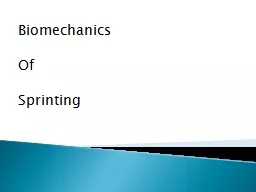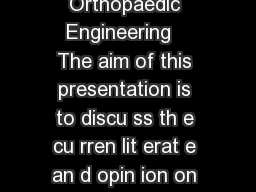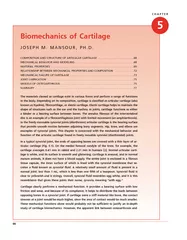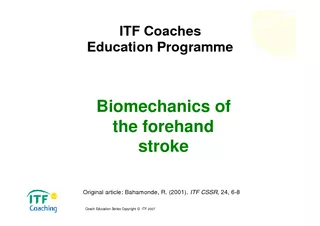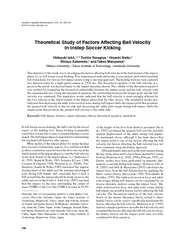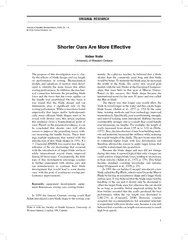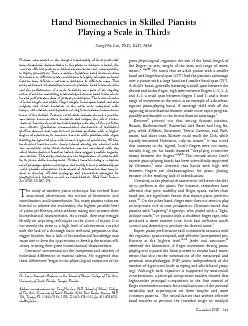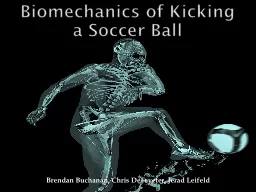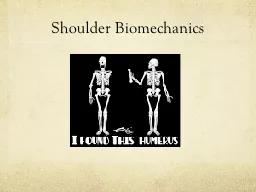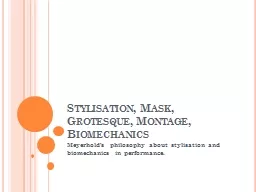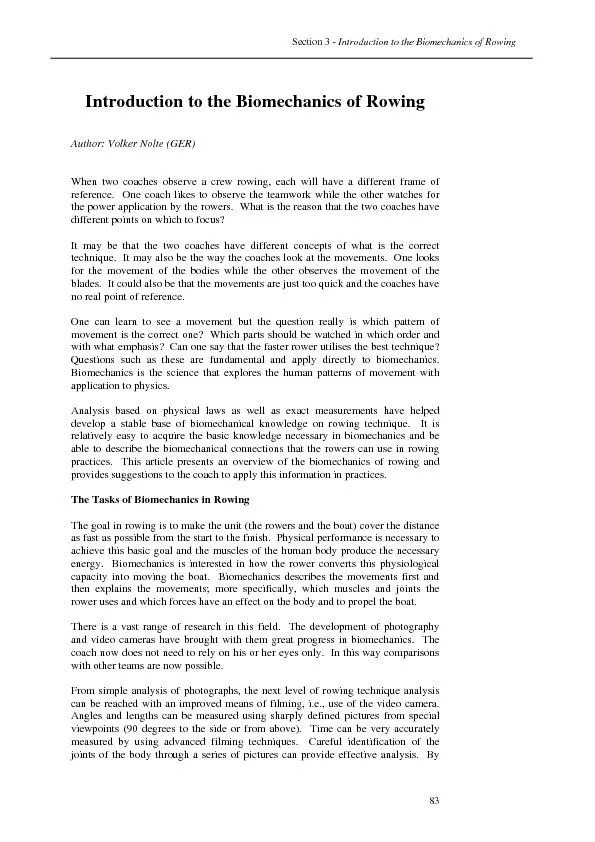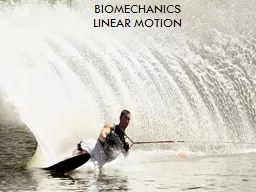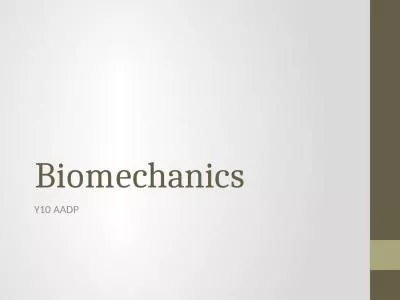PPT-Biomechanics
Author : yoshiko-marsland | Published Date : 2016-07-18
Of Sprinting Horizontal Velocity throughout the race is constantly changing Most Important part of the race Acceleration Maximum velocity Understanding Sprint Performance
Presentation Embed Code
Download Presentation
Download Presentation The PPT/PDF document "Biomechanics" is the property of its rightful owner. Permission is granted to download and print the materials on this website for personal, non-commercial use only, and to display it on your personal computer provided you do not modify the materials and that you retain all copyright notices contained in the materials. By downloading content from our website, you accept the terms of this agreement.
Biomechanics: Transcript
Of Sprinting Horizontal Velocity throughout the race is constantly changing Most Important part of the race Acceleration Maximum velocity Understanding Sprint Performance Horizontal velocity of an elite sprinter. MANNING 12 LEE MARGETTS 13 MARK R JOHNSON PHILIP J WITHERS WILLIAM I SELLERS PETER L FALKINGHAM PAUL M MUMMERY PAUL M BARRETT AND DAVID R RAYMONT School of Earth Atmospheric and Environmental Sciences and The Manchester Museum University of Manchest I i te nd to cover Re lat Bio ech cs to C lin ical R lev e 1 Cuff Mecha ics 2 Tendon Ana omy laye rs microanatomy blood supply 3 Pathomechanics of c ff tears Rotator cuff Mus les The s oulder complex comprises 30 mu scles These muscles both mo ve t MANSOUR PHD COMPOSITION AND STRUCTURE OF ARTICULAR CARTILAGE 68 MECHANICAL BEHAVIOR AND MODELING 68 MATERIAL PROPERTIES Biomechanics of the forehand strokeITF Coaches Education ProgrammeOriginal article, R. (2001). ITF CSSR, 24, 6- CoachSeries Copyright Hideyuki Ishii (Corresponding Author) is with Rikkyo University, Niiza-shi, Saitama, Japan; the Tokyo Institute of Technology, Meguro-ku, Tokyo, Japan; and with the Institute of Health and Sports Scie Nolte is with the Faculty of Health Sciences, University of Western Ontario, London, ON, Canada. ORIGINAL Shorter Oars Are More EffectiveVolker NolteUniversity of Western Ontariomunity. As a physics December 2010 Hand Biomechanics in Skilled PianistsPlaying a Scale in Thirds Dr. Lee is Associate Professor in the School of Music, College of The Arts,niversity of South Florida, Tampa, Florida.ddres Brendan Buchanan, Chris . DeFeyeter. , . Jerad. . Leifeld. Introduction . Many different types of kicks in soccer . Depends on the situation you are in. Two types we are focusing on is the goal kick and a laces shot. Sternoclavicular and Acromioclavicular Joints. SC Joint. Saddle-type, but functions as ball & socket. 4 ligaments. Strong, but MOBILE. ROM=60° elevation and 25-30° anterior and posterior movement. , Mask, Grotesque. , Montage, Biomechanics. Meyerhold’s. philosophy about stylisation and biomechanics in performance.. What You Need . T. o Do. Define . stylisation. . and . explain. how . Meyerhold. humerus. and carpals. Skeleton of the Hand. The carpus (wrist) consists of 8 small bones (carpals). Two rows of carpal bones. Proximal row - scaphoid, lunate, triquetrum, pisiform. Distal row - trapezium, trapezoid, capitate, hamate. Sect i on 3 - Int r oduct i on t o t h e Bi omechani cs of Row i ng Author: Volker Nolte (GER) When two coaches observe a crew rowing, each will have It may be that the two coaches have differen June 2013. June 2013. June 2013. Pure linear motion. Linear motion movement of a body in a . straight. line or . curved line. , where . all parts . move the same distance, in the same direction over the same time.. Bio = body. Mechanics = workings. Biomechanics is the . study of . how and what makes the body . move.. Biomechanical Terms. Force. The pushing or pulling action that on object applies to another.. Gravity.
Download Document
Here is the link to download the presentation.
"Biomechanics"The content belongs to its owner. You may download and print it for personal use, without modification, and keep all copyright notices. By downloading, you agree to these terms.
Related Documents

